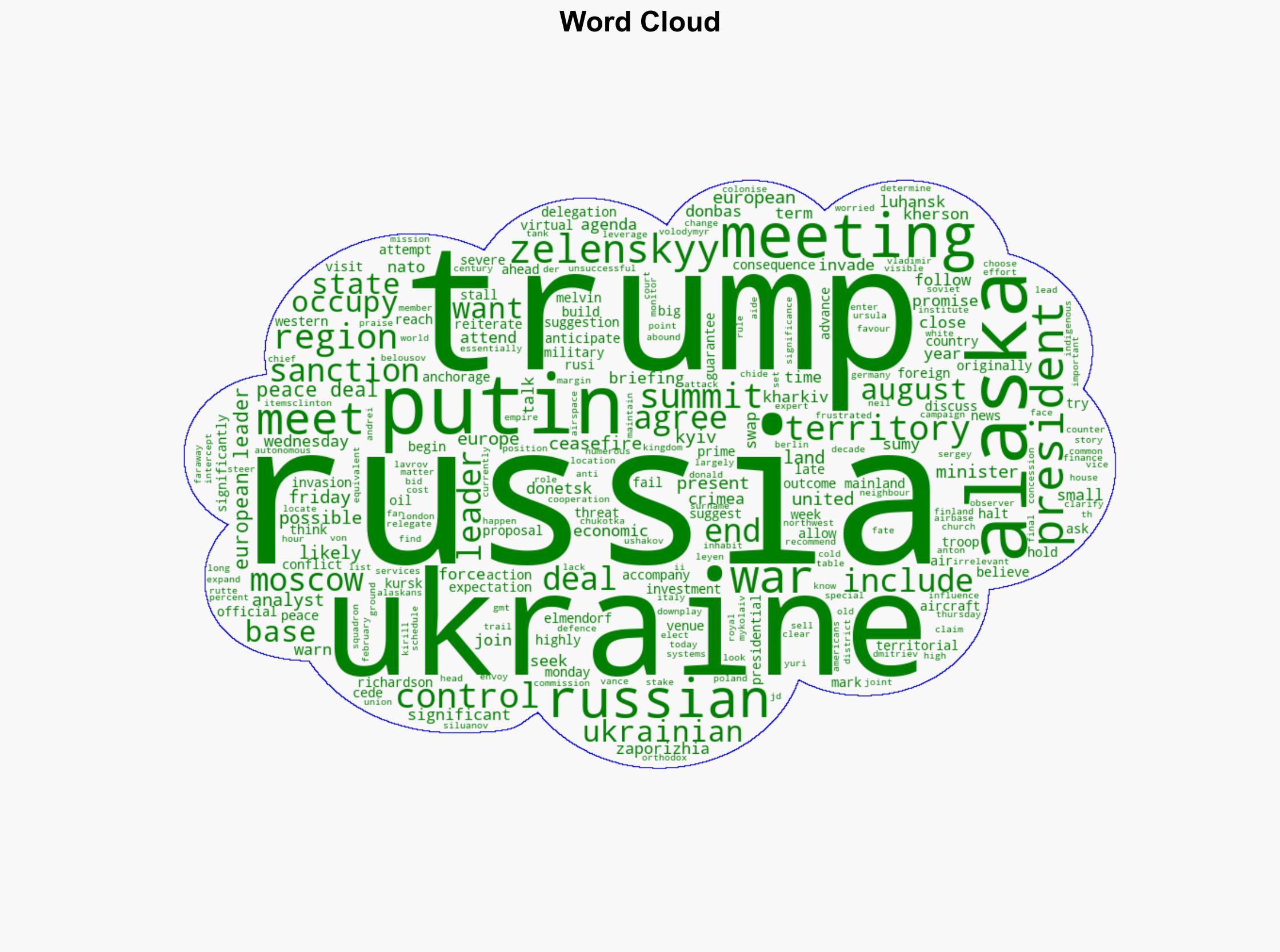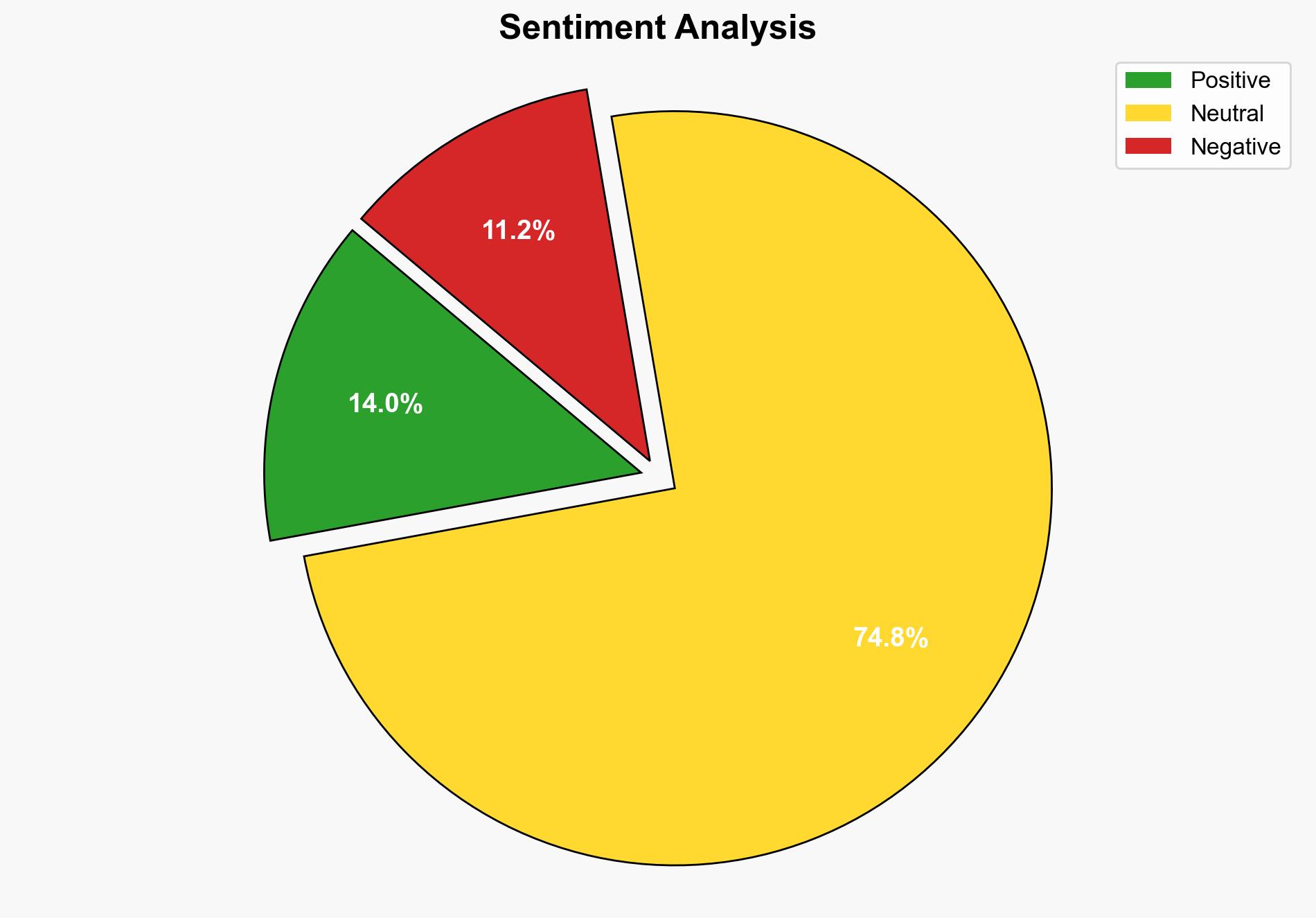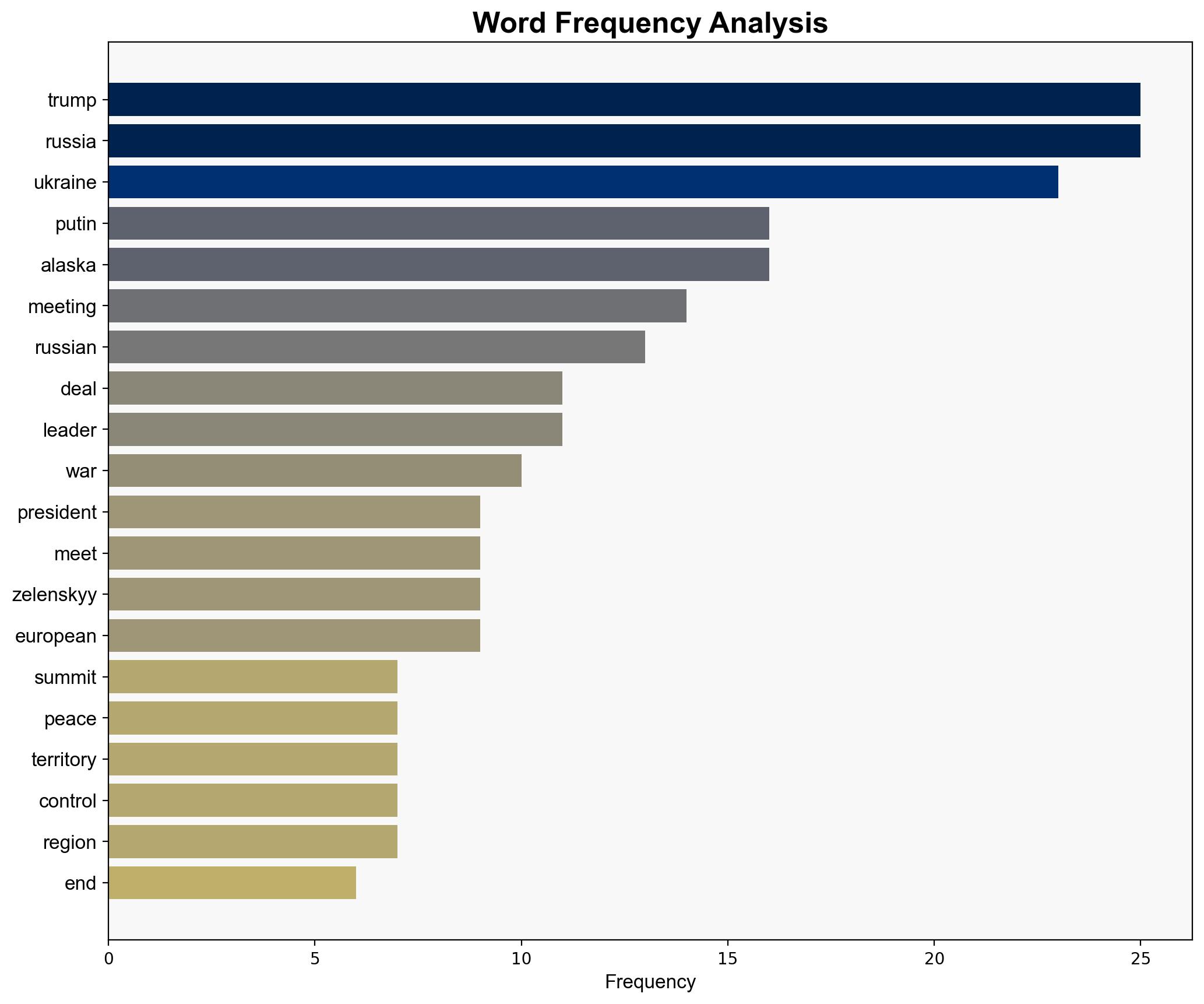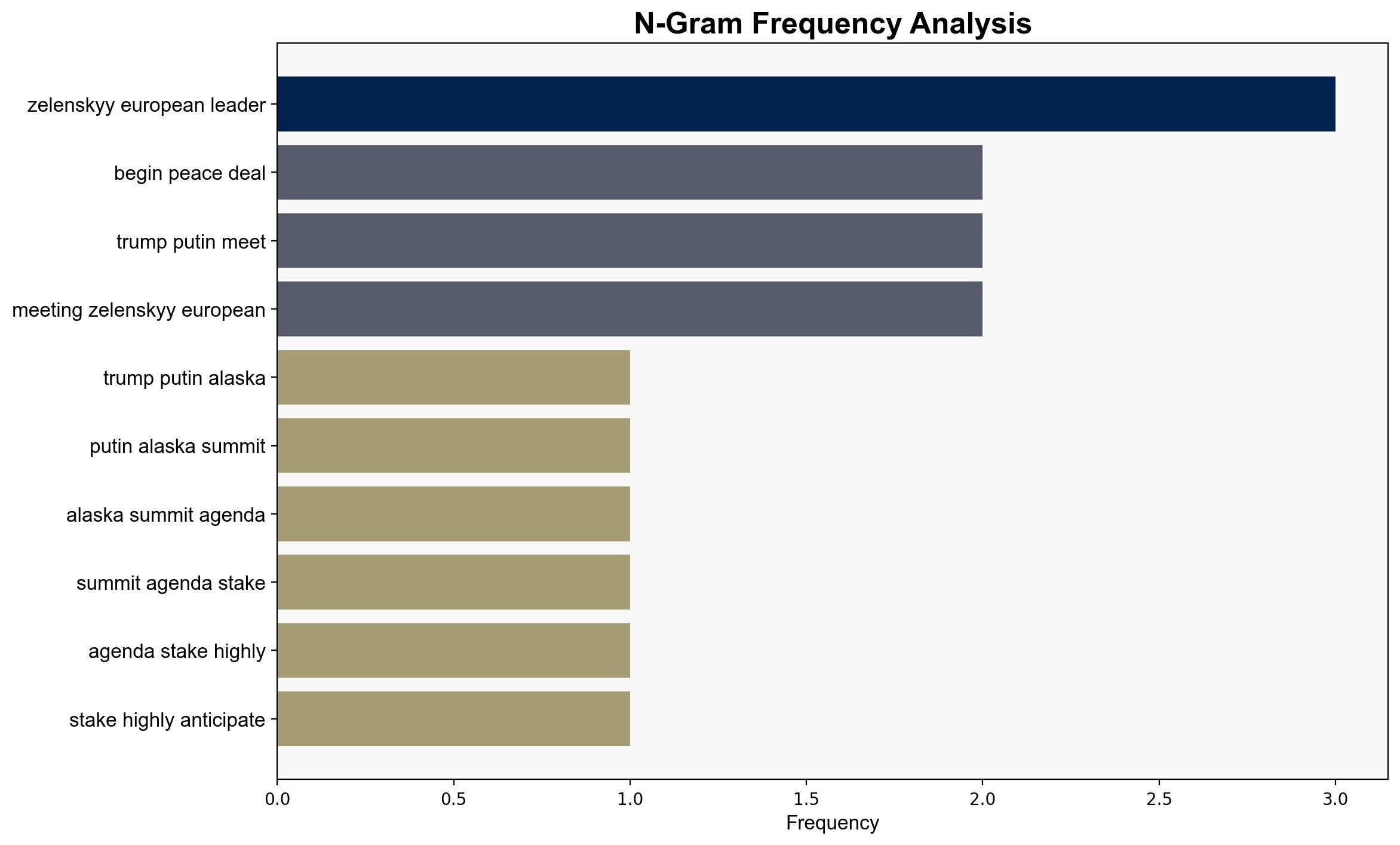Trump-Putin Alaska summit Whats on the agenda and whats at stake – Al Jazeera English
Published on: 2025-08-15
Intelligence Report: Trump-Putin Alaska Summit – Agenda and Stakes
1. BLUF (Bottom Line Up Front)
The most supported hypothesis is that the Alaska summit between Donald Trump and Vladimir Putin is primarily a strategic maneuver by both leaders to appear proactive in resolving the Ukraine conflict, with limited expectations of achieving a substantive peace deal. Confidence level: Moderate. Recommended action: Monitor the summit closely for any unexpected shifts in rhetoric or policy, and prepare for potential geopolitical ramifications if the summit fails to produce tangible outcomes.
2. Competing Hypotheses
1. **Hypothesis A**: The summit is a genuine attempt by Trump and Putin to negotiate a ceasefire in the Ukraine conflict, leveraging the strategic location of Alaska to facilitate discussions away from European influence.
2. **Hypothesis B**: The summit is primarily a political theater, aimed at bolstering domestic and international perceptions of both leaders as peacemakers, with little expectation of achieving a lasting resolution to the Ukraine conflict.
Using the Analysis of Competing Hypotheses (ACH) 2.0, Hypothesis B is better supported due to the historical context of previous unsuccessful attempts by Trump to end the Ukraine conflict and the symbolic rather than strategic choice of Alaska as the meeting venue.
3. Key Assumptions and Red Flags
– **Assumptions**:
– Hypothesis A assumes both leaders have genuine intent and capability to influence the conflict’s outcome.
– Hypothesis B assumes the summit is primarily for public relations purposes, with limited substantive engagement.
– **Red Flags**:
– The absence of key European leaders at the summit raises questions about the inclusivity and legitimacy of any agreements reached.
– The historical pattern of failed negotiations suggests potential overconfidence in the summit’s success.
– **Blind Spots**:
– Potential underestimation of behind-the-scenes diplomatic efforts that may not be publicly visible.
4. Implications and Strategic Risks
– **Geopolitical Risks**: Failure to achieve a ceasefire could exacerbate tensions in Eastern Europe, potentially leading to increased military engagements.
– **Economic Risks**: Prolonged conflict could disrupt global markets, particularly in energy sectors.
– **Cyber Risks**: The summit could be a target for cyber espionage or misinformation campaigns by state or non-state actors.
– **Psychological Risks**: Public disillusionment with diplomatic efforts could erode trust in leadership and international institutions.
5. Recommendations and Outlook
- Prepare contingency plans for potential escalation in the Ukraine conflict if the summit fails.
- Engage with European allies to ensure a coordinated response to any developments from the summit.
- Scenario Projections:
- **Best Case**: A framework for a ceasefire is agreed upon, leading to de-escalation.
- **Worst Case**: Talks collapse, leading to increased hostilities and regional instability.
- **Most Likely**: Limited progress with continued diplomatic engagement necessary.
6. Key Individuals and Entities
– Donald Trump
– Vladimir Putin
– Volodymyr Zelenskyy
– Sergey Lavrov
– Andrei Belousov
– Anton Siluanov
– Yuri Ushakov
– Kirill Dmitriev
7. Thematic Tags
national security threats, geopolitical strategy, diplomatic negotiations, regional focus





